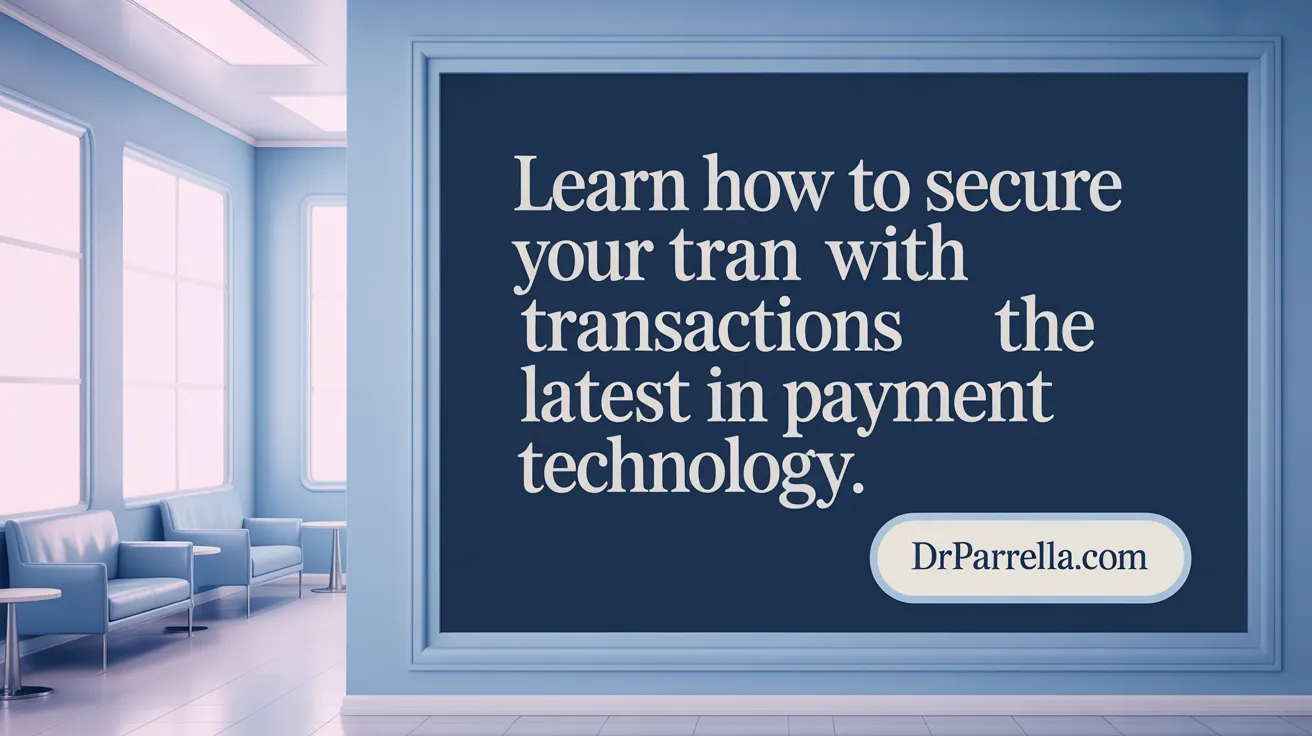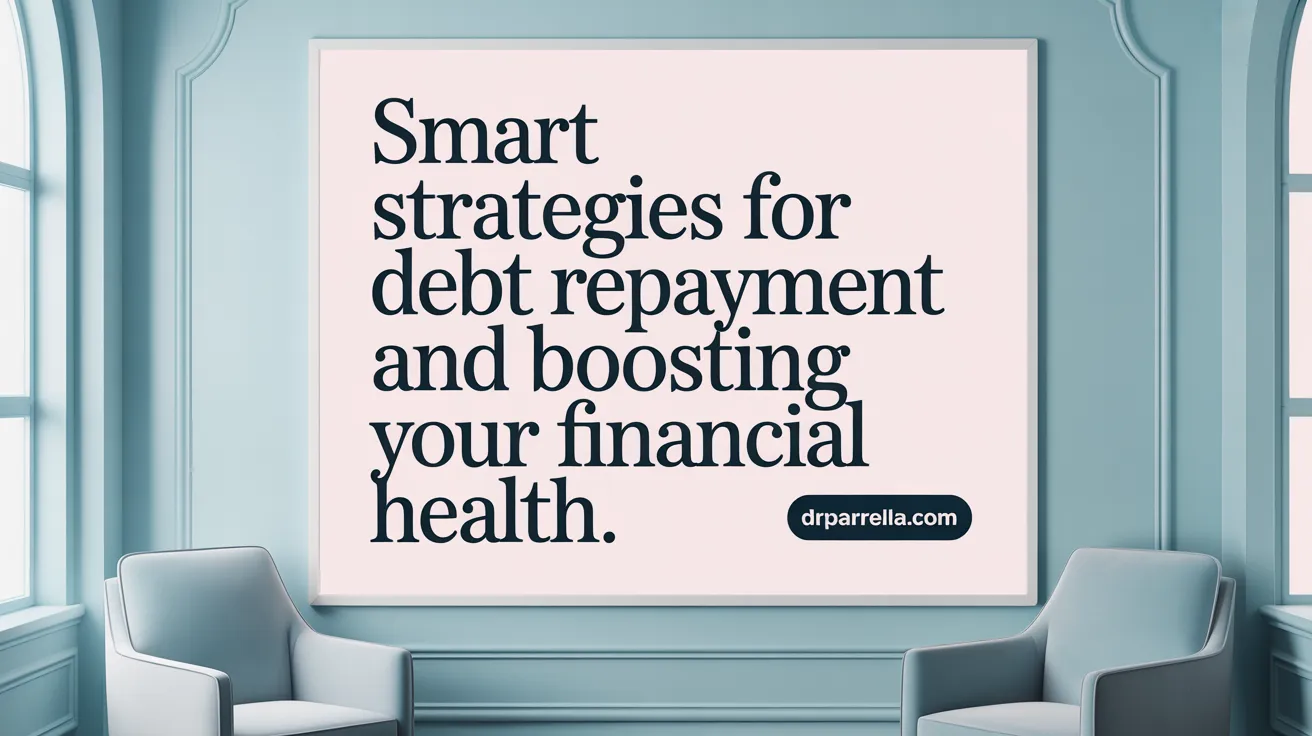Understanding the Complex World of Payment Options
Navigating the myriad of payment methods available today can be overwhelming for both consumers and businesses alike. With options ranging from traditional cash transactions to cutting-edge digital wallets and buy now, pay later plans, making informed decisions is key to reducing financial stress and ensuring smooth, secure transactions. This article breaks down essential strategies and insights to help you confidently manage your payments without anxiety or confusion.
The Evolution and Variety of Payment Methods Today

What Types of Payment Methods Are Commonly Used?
Payment methods have diversified considerably by 2025, encompassing traditional and modern options that suit various needs and contexts. Common types include cash, credit and debit cards, checks, digital wallets, bank transfers, Buy Now, Pay Later (BNPL) services, and cryptocurrencies. These methods facilitate transactions across in-person and online settings, supporting secure and efficient payments for consumers and businesses alike.
What Are the Characteristics and Uses of Different Payment Methods?
- Cash: The oldest form of payment, cash offers immediacy and universal acceptance without fees but lacks security protections and transaction records. It's favored for small, in-person purchases and remains essential in regions with limited digital access. Learn more about cash payment methods.
- Credit and Debit Cards: Cards are widely used for their convenience and ability to build credit (credit cards) or control spending (debit cards). Credit cards provide rewards and payment flexibility but involve interest charges if balances aren't paid timely. Debit cards offer direct access to funds with moderate fraud protections. See details on credit and debit cards and credit card management.
- Checks: Mostly for large or business payments, checks provide a paper trail but involve slower processing and higher risks of fraud. More about check payments.
- Digital Wallets: Examples include Apple Pay, Google Pay, and PayPal. They allow fast, contactless, and secure transactions, often employing tokenization and biometric security. Their convenience fuels high popularity, especially among mobile-first users. Learn about digital payment methods and online payment methods.
- Bank Transfers: ACH and wire transfers offer secure, bank-to-bank payments suitable for high-value or recurring transactions. While ACH transfers are cost-effective with moderate speed, wire transfers provide immediacy at higher costs. See ACH and wire transfers.
- Buy Now, Pay Later (BNPL): Services like Affirm and Klarna enable consumers to split payments without upfront interest, promoting affordability for larger purchases but require responsible use to avoid debt accumulation. More on BNPL options.
- Cryptocurrency: Utilizing blockchain, cryptocurrencies allow decentralized, fast payments with anonymity benefits but face challenges due to volatility and limited acceptance. Learn about cryptocurrency payments and digital currencies.
What Are the Trends in Payment Adoption and Preferences?
By 2025, contactless and digital payment methods have surged in popularity, with over 1.4 billion contactless card transactions recorded in markets like the UK. Digital wallets account for a significant share, favored for security and convenience. Debit cards continue to dominate online payments, favored by 63% of consumers for their direct account linkage. Meanwhile, BNPL options attract younger demographics, providing flexible credit alternatives. Although cash usage persists, especially for small and in-person transactions, the overall trend leans toward digital and automated payment solutions, aided by improved security technologies and consumer demand for seamless experiences. For deeper insights into payment trends and adoption, payment methods in 2025, and digital payment evolution.
Pros and Cons of Common Payment Types
Advantages and Disadvantages of Cash
Cash is universally accepted and immediate, with no processing fees. It offers simplicity and privacy since transactions are direct and leave no electronic trail. However, cash doesn’t build credit, poses risks like theft or loss, and can be inconvenient for large or online purchases. For more details, see Payment Methods.
Credit Cards
Credit cards provide convenience and the ability to buy now, pay later. They offer rewards, fraud protection, and can boost credit scores when managed well. On the downside, they carry risks of high-interest debt, overspending, and potential fees if payments are late. Learn more at How to Manage Credit Cards.
Debit Cards
Debit cards allow instant use of funds from your bank account and help control spending. They tend to have fewer fees than credit cards but offer limited fraud protection and no opportunity to build credit history. See more on Payment Methods.
Digital Wallets
Digital wallets (e.g., Apple Pay, Google Pay) offer fast, secure transactions with encryption and biometric security. They reduce the need to carry cards and cash. Their acceptance is growing, but some merchants may not yet support them, and they require compatible devices. More information is available on Digital Payment Methods and Safe Online Payment Methods.
Checks
Checks provide a paper trail and are useful for large or custom payments. They are slower to process, vulnerable to fraud, and less convenient for frequent transactions or online shopping. For an overview, visit Different Modes of Payment: How to Accept.
ACH Transfers
ACH transfers are secure, cost-effective bank-to-bank transfers ideal for recurring payments. They have slower processing times compared to cards and limited fraud protection, but are efficient for large transactions. Explore more at ACH Debit Payment Method.
Cryptocurrency
Cryptocurrencies enable fast, decentralized payments with enhanced privacy. Their volatility, limited acceptance, and technical complexities restrict widespread use at present. Learn about Cryptocurrency Payments.
These payment methods each serve different needs; selecting the right one depends on convenience, security, cost, and the transaction context.
Choosing Payment Methods That Align with Your Financial Goals

Evaluating Payment Choices Based on Expense Tracking, Convenience, Security, Costs, and Emotional Impact
Selecting the right payment methods involves more than just convenience. Consider how each option impacts your ability to track expenses effectively. Digital wallets and credit cards often provide detailed transaction histories and alerts, helping maintain clear budgets and avoid surprises. Cash and checks, while traditional, lack instant record-keeping, which can complicate budgeting.
Security is also paramount. Digital wallets like Apple Pay and Google Pay offer encryption, biometric authentication, and tokenization, enhancing payment safety. Credit cards feature fraud protection and virtual card numbers that limit exposure. Meanwhile, cash carries theft risks, and debit cards have limited fraud safeguards.
Cost factors include processing fees, especially on credit and debit cards which range between 1–3.5%, while cash involves no fees but lacks credit benefits. Buy now, pay later options can ease immediate expense pressure but may incur interest and affect credit if mismanaged.
Emotional responses to payment stress can be significant. Automating bill payments and aligning due dates with paychecks reduce late fees and anxiety. Financial therapy and mindfulness also improve emotional resilience regarding money management.
Aligning Payment Choices with Budget and Credit Management
When picking payment methods, ensure they complement your budget and credit goals. Credit cards can build credit scores when bills are paid on time and balances kept below 30%. Paying more than minimum amounts speeds debt reduction and lowers interest paid. Debit cards assist in controlling spending but do not build credit.
Setting up autopay for recurring bills prevents missed payments, while tracking expenditures with budgeting apps can help spot patterns and reduce unnecessary spending.
Ultimately, diversifying payment methods while focusing on those that support your financial planning and provide security and convenience leads to better money management and reduced financial stress.
Reducing Bill-Paying Stress with Budgeting and Automation
Creating detailed budgets
One of the most effective ways to ease bill-paying stress is by creating a detailed monthly budget. This practice helps track all expenses and income clearly, minimizing the chances of financial surprises. Knowing exactly where your money goes can help you identify unnecessary spending and prioritize bills to ensure timely payments.
Setting up reminders and automatic payments
To avoid late fees and the anxiety of missed payments, set up online bill-pay reminders. Many banks and service providers allow you to receive email or text alerts before due dates. Automating recurring payments through your bank or biller's system further reduces the burden of manual bill-paying and ensures bills are always settled on time.
Aligning bill due dates with paychecks
Aligning bill due dates with paychecks to coincide with your paycheck deposits ensures sufficient funds are available when payments are due. This coordination helps prevent overdrafts and payment delays, fostering better cash flow management and reducing financial anxiety.
Spreading large expenses
Breaking down large bills or expenses over multiple paycheck cycles can ease the financial load. Instead of facing a significant one-time payment, spreading costs maintains steady cash flow and prevents budget strain.
Employing these strategies together creates a smoother, less stressful bill-paying experience, ultimately contributing to improved financial well-being.
Security Considerations: Safest Methods to Pay Online and In-Person

What Security Features Do Digital Wallets, Credit, and Debit Cards Offer?
Digital wallets such as Apple Pay and Google Pay and PayPal dominate online payments due to robust security features. These include encryption, biometric authentication (fingerprints or facial recognition), tokenization, and passcodes. For instance, tokenization replaces sensitive card details with unique codes during transactions, reducing fraud risk.
Credit cards incorporate several protections, like fraud detection and liability limits which cap losses at $50 for unauthorized charges. Advanced security measures like virtual card numbers provide temporary, merchant-specific card details to prevent theft. Chip-enabled cards generate unique transaction codes, making cloning difficult. Learn more about effective credit card management.
Debit cards, while convenient, lack some fraud protections compared to credit cards. They expose users to risks such as direct bank account access and overdraft fees, making understanding card terms essential. For overview of credit and debit card benefits and risks see that link.
How Do Contactless Payments and ACH Transfers Enhance Security?
Contactless payment methods use NFC technology combined with tokenization, ensuring that each transaction generates a unique, one-time-use code. This prevents counterfeit fraud and supports touch-free payments, enhancing safety in physical stores. Contactless options include contactless card transactions and mobile wallets like Apple Pay and Google Pay.
ACH (Automated Clearing House) transfers are secure electronic bank-to-bank payments that are federally regulated. They benefit from encryption and lower fees, though processing times are slower than cards. ACH is commonly trusted for recurring payments and direct deposits.
What Are the Risks With Cash and Debit Card Payments?
Cash is inherently risky since it's tangible money that can be lost or stolen, offering no purchase protections or benefits like credit building. It also leaves no digital record, complicating dispute resolution. Learn more about cash payment methods.
Some debit card use carries risk due to potential direct access to linked bank accounts and limited fraud protection. Unauthorized transactions may cause financial disruption before detection, making vigilance important.
What Best Practices Can Improve Payment Security?
- Use digital wallets or credit cards with biometric and tokenization features for online and in-person payments.
- Prefer contactless payments in physical stores to reduce handling risks.
- Monitor accounts regularly for fraud with tools like virtual credit card numbers.
- Employ virtual or single-use card numbers for online purchases.
- Avoid cash when possible to minimize theft risk.
- Safeguard login credentials; use strong passwords and multi-factor authentication.
- Review all billing statements to spot inaccuracies quickly. Tools for managing bills and reminders can help.
These steps, combined with selecting secure payment methods, help protect against fraud and reduce financial stress related to payment security.
Leveraging Digital Wallets and Mobile Payments for Convenience and Security
Features and Popularity of Apple Pay, Google Pay, PayPal
Digital wallets like Apple Pay and Google Pay and PayPal have become leading payment methods, particularly for online and mobile transactions. These platforms offer fast, secure checkouts by encrypting payment information and using tokenization to protect user data. In 2025, digital wallets account for roughly 32% of all online transactions in North America, reflecting their growing popularity among consumers who prefer seamless purchase experiences.
Integration Needs for Merchants
Merchants looking to accept payments via digital wallets need compatible point-of-sale (POS) terminals or online integration capabilities. For example, Apple Pay and Google Pay require NFC-enabled POS systems or APIs for eCommerce sites to enable contactless or one-touch payments. PayPal can be easily integrated as an online checkout option and is supported by millions of businesses worldwide, often leading to higher conversion rates due to user familiarity and trust.
Customer Preferences and Benefits
Consumers favor digital wallets for their convenience, speed, and enhanced security features — such as biometric authentication and one-time-use tokens. These benefits reduce the risk of fraud and streamline the checkout process. Additionally, digital wallets allow for storing multiple payment methods and loyalty cards in one place, simplifying payments and encouraging customer loyalty. The widespread adoption of these wallets aligns with customer demand for quick, safe, and flexible payment options as discussed in Digital payment methods overview.
Understanding Buy Now, Pay Later (BNPL) and Its Role in Payment Options
How BNPL Works
Buy Now, Pay Later (BNPL) lets consumers purchase items immediately and pay in installments, often interest-free for short periods. Typically, payments are divided into four parts due bi-weekly or monthly, providing flexibility without upfront interest. This method requires integration with BNPL providers on merchant platforms.
Benefits for Consumers and Merchants
Consumers gain purchasing power and budgeting ease, especially for higher-ticket items. BNPL attracts younger buyers and improves accessibility by splitting payments without immediate financial strain. Merchants benefit from increased sales and reduced cart abandonment due to flexible payment options.
Risks and Responsible Usage Tips
While BNPL may encourage better credit building if used carefully, overuse can lead to debt accumulation and missed payments. Experts recommend using BNPL for planned, necessary purchases only, tracking repayment schedules, and reading terms carefully to avoid fees.
Popular Providers Like Affirm and Klarna
Leading BNPL providers include Affirm and Klarna, offering interest-free installment options and flexible plans with no late fees. Affirm partners with major retailers, and Klarna supports easy online shopping with simple payment scheduling. Both emphasize transparency and consumer-friendly terms.
By understanding how BNPL works and practicing responsible use, consumers and merchants can benefit from this growing payment option.
Managing Credit Card Debt and Building Healthy Financial Habits

Why is it Important to Pay Credit Cards on Time and Maintain Low Utilization?
Paying credit card bills on time is crucial, as on-time payments represent 35% of your credit score. Timely payments prevent late fees and reduce interest charges, helping you maintain a positive credit history. Additionally, keeping your credit card balances below 30% of your credit limit positively impacts your credit score and borrowing terms. Learn more about Effective Credit Card Management and Managing Debt Payments and Balances.
What Are Effective Debt Repayment Strategies?
Managing credit card debt can be more manageable using structured repayment methods. Two popular strategies include:
- Debt snowball method: Focus on paying off the smallest debts first to gain momentum.
- Debt avalanche method: Prioritize debts with the highest interest rates to reduce overall interest paid.
Another helpful approach is debt consolidation using lower-interest personal loans or balance transfers to simplify payments and reduce interest costs. For more on Debt Repayment Strategies and Credit Card Debt Management.
How Can Budgeting Tools and Credit Goals Help?
Creating a detailed budget is foundational to controlling expenses and reducing credit card debt. Digital tools like Mint, You Need a Budget (YNAB), and Goodbudget help track spending, identify leaks, and plan payments efficiently. Setting clear credit goals, such as reducing debt-to-income ratio below 35% and limiting credit utilization under 30%, supports long-term financial health. Explore Creating a Detailed Monthly Budget and Tracking Expenses and Money Management Tips.
By combining on-time payments, strategic debt repayment, and disciplined budgeting, individuals can build stronger credit profiles and alleviate financial stress. For additional guidance, see How to Not Stress About Money and Financial Therapy for Well-being.
Optimizing Payment Acceptance for Businesses to Enhance Cash Flow and Customer Satisfaction
Why Accept Multiple Payment Methods?
Accepting a variety of payment methods is critical for businesses aiming to improve customer satisfaction and expand sales. Different customers prefer different payment types — from credit and debit cards to digital wallets, bank transfers, and even cash in certain regions. Offering diverse options caters to all demographics, reduces purchasing friction, and can minimize cart abandonment, a major concern especially for eCommerce platforms where up to 70% of carts are abandoned.
Choosing Payment Gateways and Processors
Selecting the right payment gateway is essential for seamless payment processing, security, and operational efficiency. Platforms like Stripe and Adyen provide robust, user-friendly solutions that support a broad range of payment methods, including credit cards, digital wallets (Apple Pay, Google Pay, PayPal), and buy now, pay later options. These gateways also offer easy integration via APIs and dashboards that manage payments, disputes, and reconciliation all in one place.
Integrating Local Payment Methods
For businesses with a global customer base, incorporating local payment methods is a game changer. Providers such as Stripe and Adyen support regional options like iDEAL in the Netherlands, BLIK in Poland, Pix in Brazil, and UPI in India. Integrating these preferred methods not only respects local preferences but also increases approval rates and conversion by up to 13%, reducing cart abandonment driven by unavailable payment choices.
Impact on Cart Abandonment
Customers often abandon carts if their favored payment method is missing or if the checkout process seems insecure or cumbersome. By accepting multiple popular methods and utilizing secure, streamlined payment gateways, businesses can significantly improve transaction completion rates. Features like tokenization and AI-driven payment option selection further enhance security and convenience, creating a frictionless checkout experience that fosters trust and repeat business.
The Emotional Side of Financial Stress and Payment Management

Understanding the Psychological Impacts of Money Stress
Money-related stress extends beyond budgets and bills, affecting emotional and psychological well-being. Individuals experiencing financial stress may feel constant worry, guilt about spending, social withdrawal, and even depression. These feelings often stem from concerns about security, stability, and freedom, compounded by debt or unclear financial goals. For insights on how to not stress about money and tips to reduce money stress, exploring effective strategies for managing financial anxiety is crucial.
Strategies for Reducing Emotional Stress
Addressing the emotional side of finances is as important as managing the practical aspects. Financial therapy for well-being offers a space to explore money beliefs and habits to boost resilience. Mindfulness and finances, including meditation and stress-reducing hobbies, can help ease anxiety tied to financial worries. Education about creating a detailed monthly budget, credit, and payment options empowers better decision-making and confidence.
Balancing Practical Money Management with Emotional Wellness
Creating detailed budgets, automating payments, and setting reminders not only improve financial control but reduce the anxiety of missed bills. Aligning bill due dates with paychecks and spreading large expenses over pay periods further ease money stress. Combining these pragmatic steps with emotional strategies fosters healthier relationships with money, promoting both financial stability and overall well-being.
Tips to Maintain Control Over Payments and Financial Health
Tracking spending with tools and apps
Keeping an eye on where your money goes is essential for financial control. Digital tools like Mint, You Need a Budget (YNAB), Goodbudget, and Quicken Simplifi provide easy ways to monitor expenses and categorize spending. These apps help identify areas where you might overspend and allow you to adjust your budget accordingly.
Regularly reviewing bills and statements
Regularly checking your bills and financial statements helps prevent errors and unnecessary charges. It ensures that you’re paying accurate amounts and can also spot suspicious activity early. Setting reminders or automating bill payments can help avoid late fees, while coordinating payment due dates with your paychecks can reduce stress.
Building emergency funds
An emergency fund covering three to six months of essential expenses is a financial safety net that protects against unexpected costs like medical bills or urgent home repairs. Setting up automatic transfers to a dedicated savings account makes building this fund manageable and consistent. Learn more about building an emergency fund and its importance.
Seeking professional advice and support
When financial situations become overwhelming, reaching out to credit counselors or financial advisors can provide personalized guidance. Financial professionals help create realistic budgets, debt repayment plans, and long-term strategies to improve your financial health. Additionally, financial therapy for well-being can address emotional stress related to money, offering a holistic approach to well-being.
Achieving Peace of Mind Through Smart Payment Choices
Effectively navigating payment options without stress involves understanding the diversity of available methods, embracing automation and budgeting, prioritizing security, and addressing the emotional aspects of financial management. By making informed choices that align with personal goals and circumstances, both consumers and businesses can enjoy smoother transactions, better control over finances, and reduced anxiety. Continuous education and the use of modern technologies offer powerful tools to foster financial resilience and confidence in an increasingly complex payment landscape.
